
14 crossword puzzles related to 7th grade science.
- Subject:
- Life Science
- Physical Science
- Material Type:
- Homework/Assignment
- Author:
- Share My Lesson Science Team
- Date Added:
- 06/11/2021

14 crossword puzzles related to 7th grade science.
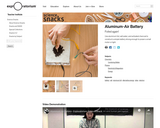
Use aluminum foil, salt water, and activated charcoal to construct a simple battery strong enough to power a small motor or light.
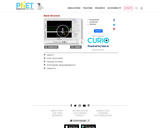
Explore the origin of energy bands in crystals of atoms. The structure of these bands determines how materials conduct electricity.
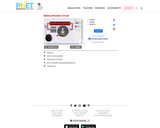
Look inside a resistor to see how it works. Increase the battery voltage to make more electrons flow though the resistor. Increase the resistance to block the flow of electrons. Watch the current and resistor temperature change.
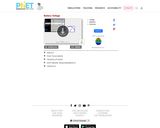
Look inside a battery to see how it works. Select the battery voltage and little stick figures move charges from one end of the battery to the other. A voltmeter tells you the resulting battery voltage.
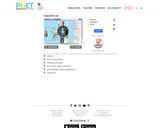
Explore how a capacitor works! Change the size of the plates and add a dielectric to see how it affects capacitance. Change the voltage and see charges built up on the plates. Shows the electric field in the capacitor. Measure voltage and electric field.
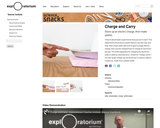
In this activity about electricity, learners produce a spark that they can feel, see, and hear. Learners rub a Styrofoam plate with wool to give it an electric charge. Then, they use the charged Styrofoam to charge an aluminum pie pan. Essentially, learners build an electrophorus (Greek for "charge carrier"). This resource also contains instructions on how to build a large charge carrier called a "Leyden Jar" using a plastic film can.
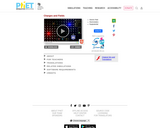
Move point charges around on the playing field and then view the electric field, voltages, equipotential lines, and more. It's colorful, it's dynamic, it's free.
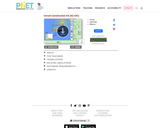
This new version of the CCK adds capacitors, inductors and AC voltage sources to your toolbox! Now you can graph the current and voltage as a function of time.

Build circuits with capacitors, inductors, resistors and AC or DC voltage sources, and inspect them using lab instruments such as voltmeters and ammeters.
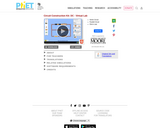
Build circuits with resistors, light bulbs, batteries, and switches and take measurements with laboratory equipment like the realistic ammeter and voltmeter.
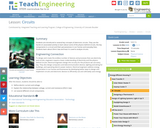
Students are introduced to several key concepts of electronic circuits. They learn about some of the physics behind circuits, the key components in a circuit and their pervasiveness in our homes and everyday lives. Students learn about Ohm's Law and how it is used to analyze circuits.

Students are challenged to design a method for separating steel from aluminum based on magnetic properties as is frequently done in recycling operations. To complicate the challenge, the magnet used to separate the steel must be able to be switched off to allow for the recollection of the steel. Students must ultimately design, test, and present an effective electromagnet.

Experiment with conductivity in metals, plastics and photoconductors. See why metals conduct and plastics don't, and why some materials conduct only when you shine a flashlight on them.

Play ball! Add charges to the Field of Dreams and see how they react to the electric field. Turn on a background electric field and adjust the direction and magnitude. (Kevin Costner not included).
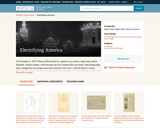
This collection uses primary sources to explore the introduction of electric power to the United States. Digital Public Library of America Primary Source Sets are designed to help students develop their critical thinking skills and draw diverse material from libraries, archives, and museums across the United States. Each set includes an overview, ten to fifteen primary sources, links to related resources, and a teaching guide. These sets were created and reviewed by the teachers on the DPLA's Education Advisory Committee.
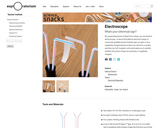
This activity from the Exploratorium provides instructions to build an electroscope, a device that detects electrical charge. Common, inexpensive materials including film canisters, 3-M Scotch Magic™ Tape, and a plastic comb are used to show the attractions and repulsions between positively and negatively charged objects. The site also provides an explanation of the results and suggestions for extension activities.
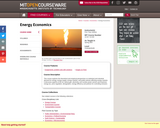
This course explores the theoretical and empirical perspectives on individual and industrial demand for energy, energy supply, energy markets, and public policies affecting energy markets. It discusses aspects of the oil, natural gas, electricity, and nuclear power sectors and examines energy tax, price regulation, deregulation, energy efficiency and policies for controlling emission.
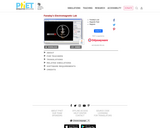
Play with a bar magnet and coils to learn about Faraday's law. Move a bar magnet near one or two coils to make a light bulb glow. View the magnetic field lines. A meter shows the direction and magnitude of the current. View the magnetic field lines or use a meter to show the direction and magnitude of the current. You can also play with electromagnets, generators and transformers!

Light a light bulb by waving a magnet. This demonstration of Faraday's Law shows you how to reduce your power bill at the expense of your grocery bill.